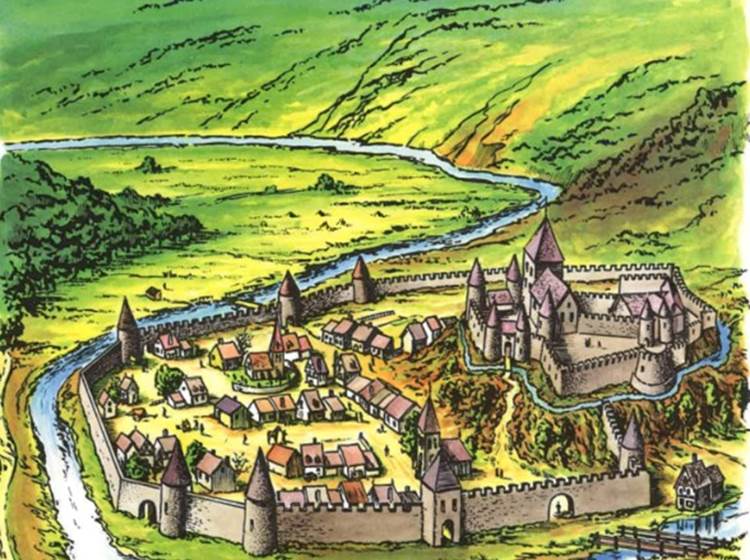
Welcome to the castle

image
The history of the La Roche-en-Ardenne feudal castle
Welcome to the La Roche-en-Ardenne castle, where the whole Syndicat d'Initiative team is delighted to welcome you.
Listed since the mid-1970s, this castle is a real showcase for our town and the province of Luxembourg.
During your visit, you'll go back in time to understand the challenges faced by this fortress, its evolution and successive adaptations - an immersion in history, so to speak.
A leaflet, several numbered panels and QR codes will accompany you.
Before you begin your tour of this heritage gem, a little background is in order. Like all castles, its history is steeped in legend. It is said to have been built on the remains of a Roman oppidum, the Carolingians (Charlemagne's era, 9th century) would have established their quarters here, and the first stones of the feudal castle would have been laid as early as the 10th century. However, nothing is less certain. Indeed, solid historical evidence is lacking, and archaeology, too, remains dubious about these claims.
In any case, the 11th century seems to be the most plausible period for the construction of the first parts of the castle.
This hypothesis is reinforced by archival and field research. At that time, the property was owned by the Counts of Namur. While La Roche was the seat of a county and the castle belonged to it, it later became the property of the County of Luxembourg, the future Duchy of Luxembourg.
The strategic role of the site was to defend the road from Flanders to Italy, and also to monitor traffic on the Ourthe. The Ourthe, a natural rampart, lies some forty meters below the castle, established on a rocky outcrop at the heart of a meander in the river.
The town of La Roche grew up between the Ourthe and the castle. In 1331, the town was authorized to surround itself with ramparts, and its fortress was refurbished several times to adapt to the changes of time, in particular to warfare and siege techniques, and to advances in artillery.
It was the French occupation (Louis XIV) at the end of the 17th century that profoundly altered the château's appearance and functions, and gave it much of its current appearance.
Under Austrian rule in the 18th century, plans were made to convert the castle into a prison, but this project never came to fruition. For the town's inhabitants, the castle became a useful stockpile of materials.
The historic monument was then acquired by a private individual, who wished to build housing on it, before it was bought by the state in 1852. Today, it is still owned by the federal government through the Régie des Bâtiments. In the mid-1990s, the Walloon Region's excavation service and the Association pour la sauvegarde du patrimoine historique rochois undertook several excavation campaigns on different sites. These have enabled us to reconstruct the rich history of this site, miraculously spared by Allied aerial bombardment during the Battle of the Bulge in 1944.
Enjoy your visit!




